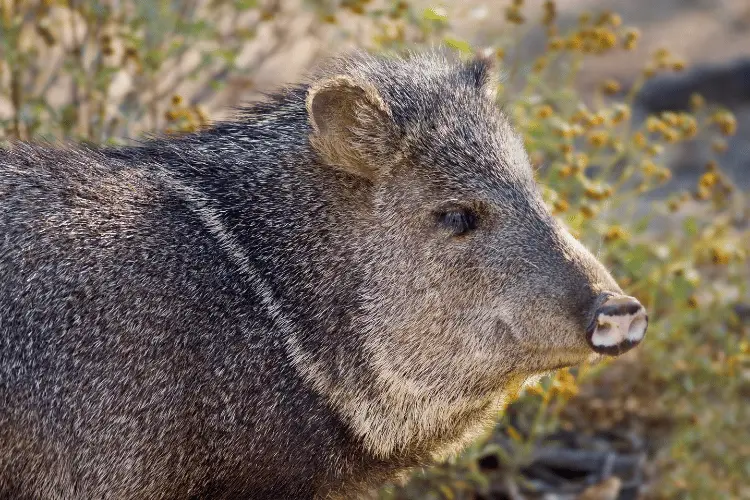We strive to provide you with authoritative, trustworthy, and expert advice. In doing so, the staff at texaswalkabout.com performs extensive research, editing, and fact checking to every post on this webiste. If you feel that this article can improve, please feel free to reach us at staff@texaswalkabout.com
Javelinas look like pigs, but they’re actually peccaries. They have a reputation for being aggressive, yet they’re far from it.
There are a lot of inaccurate beliefs about these game animals. It’s time to uncover the truth about these mammals.
In this post, we’ll provide all the information you need about Texas javelina. We’ll also give you general guidelines to follow if you plan to go javelina hunting.
A Quick Overview of Texas Javelina
Before we dig deep into detailed information about the Texas javelina, here’s a quick look at this unique animal:
| Other names | Collared Peccary |
| Species | Collared Peccary |
| Average weight | 30-55 pounds |
| Height | 18-24 inches |
| Color | Grizzled black and brown |
| Predators | Humans, Mountain lions, Bobcats, Coyotes, and jaguars |
| Range in Texas | The state’s southern one-third |
| Found also in | New Mexico and Arizona |
| Life expectancy | 5-10 years |
The Physical Appearance and Traits of Javelinas
Both male and female javelina have a highly similar appearance and size. That way, it’s hard to distinguish the two genders from a distance.
They have stout bodies and hides covered with grizzled grayish and black hair. These mammals also possess a white band of coarse hair encircling their necks.
In addition, javelinas have a unique mane of hair that extends from the back of their head to their tail.
When they’re angry or frightened, the bristles of their mane stand up. This makes them look ferocious and larger.
These animals have small eyes and poor eyesight. Similarly, they have poor hearing ability.
On the contrary, javelinas’ sense of smell is robust.
Javelina Size
Javelinas are small and compact animals, typically weighing between 30 and 55 pounds.
They stand approximately 18-20 inches tall at the shoulder and reach a length of up to 3 feet.
The Wildlife of Javelinas
Javelinas live in groups of 5 to 30 individuals. Unlike many other animals, javelina herds have no specific leader.
A typical javelina herd consists of one-third adult females, one-third adult males, and one-third young javelinas.
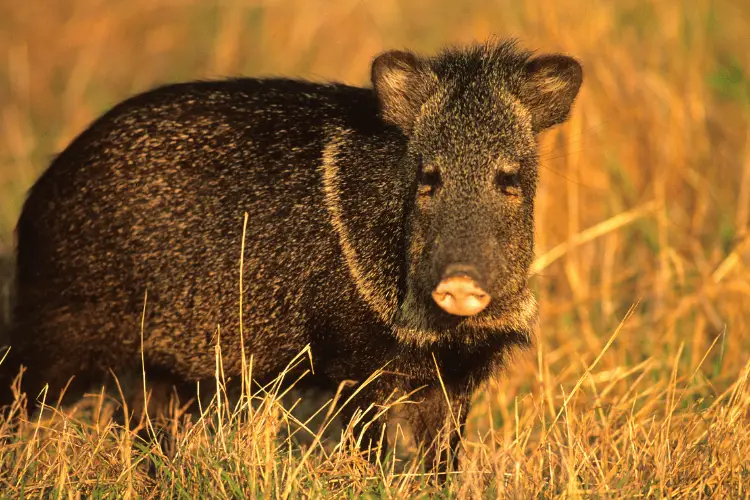
From time to time, a male javelina may leave its group and join another.
Sometimes, individual javelinas also leave their family group and wander around alone for a while before rejoining the group later.
On average, the home range of a javelina herd is about 550 acres. However, it can be as small as 300 acres in areas with large populations.
Javelinas don’t travel for more than a mile per day. When resources are abundant, they usually cover only half a mile.
However, in times of resource scarcity, they spread out and cover larger areas in search of more resources.
Javelinas use the same bedding area for multiple days before moving to another location.
They’re compelled to continuously change their bedding area to avoid the concentration of fleas that rapidly spread in those areas.
Reproduction and Breeding Season
Javelinas are the only tropical species with no specific breeding season; they can breed all year round. However, most young javelinas are born in the early fall.
These animals can begin breeding when they’re only 11 months old.
The gestation period of these mammals takes an average of 145 days. A female can produce two young javelinas per year.
Newborn javelinas weigh only about a pound at birth. They have a yellowish and reddish-brown color, but their color darkens as they reach two months of age.
Unfortunately, only one-third of the young javelinas usually survive hunger and harsh weather. Predators, especially bobcats, and coyotes, also contribute to many of these young being lost.
Javelinas Diet: Do Javelinas Eat Meat?
Javelinas are omnivorous, consuming both meat and plants. Their sharp canine teeth enable them to do so effectively.
However, contrary to popular belief, javelinas don’t eat snakes or chase down prey. Instead, they primarily rely on plant-based sources for their diet.
They obtain half of their diet from prickly pear cactus. Although prickly pears are known for their sharp spines, javelinas pay little attention to these thorns.
Additionally, javelinas obtain the other half of their diet from mesquite beans, grasses, wild grapes, prickly pear fruits, and sotol.
Occasionally, they eat lizards, dead birds, and rodents.
Further, these animals depend on stock tanks and water holes to meet their water requirements.
Nonetheless, when water resources are scarce, javelinas get their moisture from prickly pear cactus.
Javelina Activity and Feeding in Summer
Javelinas spend the majority of summer daytime inactive. They usually start moving and feed at night.
During those hot months, javelinas search for food for approximately 4 to 6 hours. They return to the bedding grounds around sunrise.
Javelina Activity and Feeding in Winter
Unlike in summer, javelinas are active during the daytime hours and at night in winter. They start feeding in the late afternoon and continue searching for food throughout the night.
These animals spend approximately 13 to 15 hours a day feeding in winter. By early morning, they return to their bedding grounds.
The Range of Javelinas in Texas
Javelinas in Texas are currently found in the state’s southern one-third. You can find them in 93 counties.
However, they’re predominantly distributed in the arid and semi-arid parts of the state, where the annual precipitation levels range from 10 to 30 inches.
This range includes portions of the South Texas plains, the lower Coastal Plains, and the western half of the Edwards Plateau.
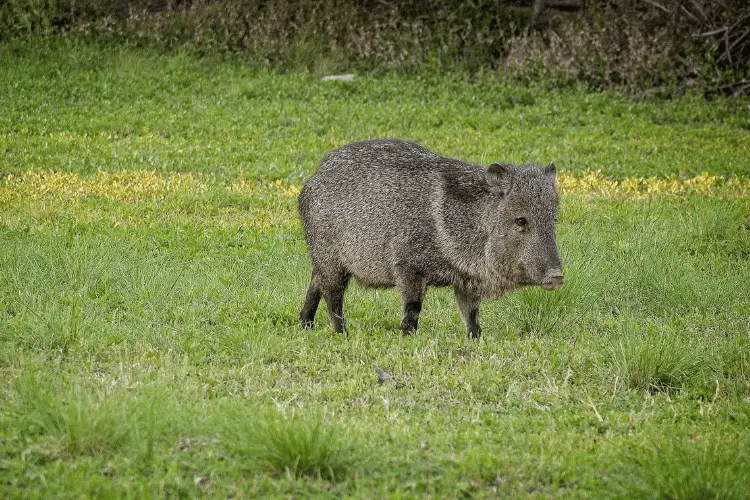
In addition, the range expands to parts of the southern edge of the Rolling Plains and the Trans-Pecos.
Javelina’s habitat consists of dense thickets of prickly pear, scrub oak, and chaparral.
These animals can adapt to various harsh conditions, from extreme heat to droughts and periodic cold spells.
It’s estimated that there are currently around 100,000 javelinas distributed throughout approximately 62 million acres of Texas Rangeland.
Still, there are also predictions that the lack of a stable habitat will prevent any future expansion for javelinas in Texas beyond their current range.
In addition to Texas, javelinas are also present in many areas in Mexico and Central America.
The Historical Range of Javelina in Texas
Historical data indicates that the original range of javelinas was much wider than the current one. It extended from Brownsville to the Red River.
The decline of the javelina range in Texas is attributed to extensive hunting by the European settlers.
They used javelinas’ hides for various leather products.
As European settlers expanded their commercial activities that depended on javelinas, the animal’s range started to shrink dramatically.
Additionally, the illegal harvesting of javelinas for different purposes played a significant role in the decline of their range.
Javelina Hunting in Texas
Javelinas are considered game animals in Texas; you can hunt them with a license. That’s why thousands of hunters from all around the US come to Texas every year.
What makes javelina hunting desirable is that it suits hunters of all levels, whether you’re a beginner or experienced.
Hunters harvest around 10,000 javelinas annually, with 62% of these hunts taking place in South Texas.
That said, each person has a bag limit of only two javelinas per year. In addition, it’s also not allowed to hunt javelina using firearms in many areas in Texas.
Instead, most hunters use archery for this task.
When Is the Hunting Season for Texas Javelinas?
There’s no closed season for hunting javelinas in Texas. You can hunt javelinas all year round.
Nonetheless, it’s recommended to go javelina hunting from mid-January until early April. This is because the weather is relatively good during this time in the hunting areas.
After April, the hunting areas start to get too hot, which makes the experience unpleasant for many hunters.
Are Javelinas Dangerous?
Javelinas have an undeserved reputation for being vicious and ferocious. However, it’s rare for javelina to attack humans.
Javelinas aren’t aggressive toward humans; they usually retreat when encountering a human. These animals can only be aggressive when defending themselves against an attack.
Nonetheless, things change significantly if a human approaches javelina while accompanied by a dog.
The presence of a dog makes javelinas much more aggressive. That’s because dogs resemble coyotes which prey on their young.
In this case, javelina will viciously attack the dog. This fight usually ends with an injured or dead dog.
What makes things worse for dogs is that other herd members usually come to aid their javelina friend in fights.
Even worse, if a hunter tries to save the dog, there’s a high probability they’ll get injured as well.
Javelinas possess extremely sharp tusks that make dangerous defensive weapons for slashing and cutting their enemies. They use these tusks when cornered or threatened.
That’s why any fight among herd members leads to countless injuries. These injuries include face cuts, torn ears, and numerous scars.
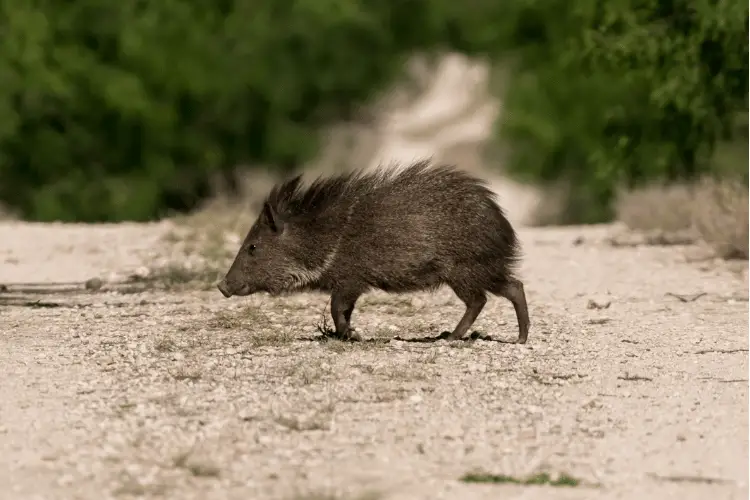
What Do Javelinas Do When Under Attack?
When a javelina animal is under attack, it produces a loud sound by hitting its teeth together. This sound serves as an alarm to the entire herd.
Once the other group members hear the sound, they scatter in all directions, searching for the source of danger. They also start to produce the same sound.
When they find the source of danger, they attack it aggressively.
That way, when the herd is aroused, the whole area can become dangerous for humans.
In this case, the safest option for a human is to climb a tree until javelinas return to their normal activities.
How Fast Can Javelina Run?
Javelinas can run extremely fast, reaching speeds of 35 miles per hour. These mammals run on their middle two toes.
Is a Javelina a Rodent or a Pig?
Javelinas aren’t rodents. Despite their similar appearance, javelina isn’t a feral hog either.
True pigs are members of the swine family, which is native to the Eastern Hemisphere. On the other hand, javelinas belong to the peccary family, which originated in the Western Hemisphere.
Here’s how to differentiate between javelinas and feral hogs:
| Feature | Javelinas | Feral Hogs |
| Weigh | 30-55 pounds | Up to 100 pounds |
| Color | Grizzled brown and black | Have various colors and color combinations |
| Tail size | Short, Unnoticeable | Relatively longer than that of javelinas |
| Number of teeth | 38 | 34 or 44 |
| Teeth shape | Straight | Curved |
| Number of hoofed toes | Three | Four |
Texas Javelina in Football and Baseball!
Because the javelina is a significant part of Texas’s identity, two well-known sports organizations in the Lone Star State hold the name ‘javelina.’
Let’s take a look at each of them:
The Texas A&M-Kingsville Javelinas
The Texas A&M-Kingsville Javelinas is the football team of A&M University in Texas. This team was founded in 1929 and currently competes in Division II.
The team also has a 15,000-seat stadium with the name of the javelina animal.
The Texas Javelina Baseball Organization
Texas also has a non-profit baseball organization called the Texas Javelina Baseball. It’s located in Magnolia.
Two Common Myths About Javelinas
In addition to the inaccurate beliefs mentioned above, there are still two other myths about javelinas. Here they are:
1. Javelinas Are Blind
Javelinas have a poor sense of sight but aren’t completely blind. They can see close objects clearly.
In addition, they have a strong sense of smell which they depend on to navigate their surroundings.
2. Javelinas Will Kill Your Pets
Although javelinas are omnivorous, they obtain most of their diet from plant sources.
These mammals rarely feed on other animals.
Final Thoughts
The Texas javelinas are popular game animals in the Lone Star State. Thousands of hunters come to Texas every year to hunt these unique mammals.
There’s no specific hunting season for javelinas. Still, it’s recommended to plan hunting trips in Texas from mid-January to April.
In addition, the range of javelinas in Texas extends through the southern one-third of the state.
Although many people think javelinas are a type of pig, the two animals have no relation to each other except for their similar appearance.
Further, javelinas aren’t aggressive toward humans; they only may attack humans to defend themselves.
These mammals eat both plants and animals. However, they obtain most of their diet from plant-based sources.
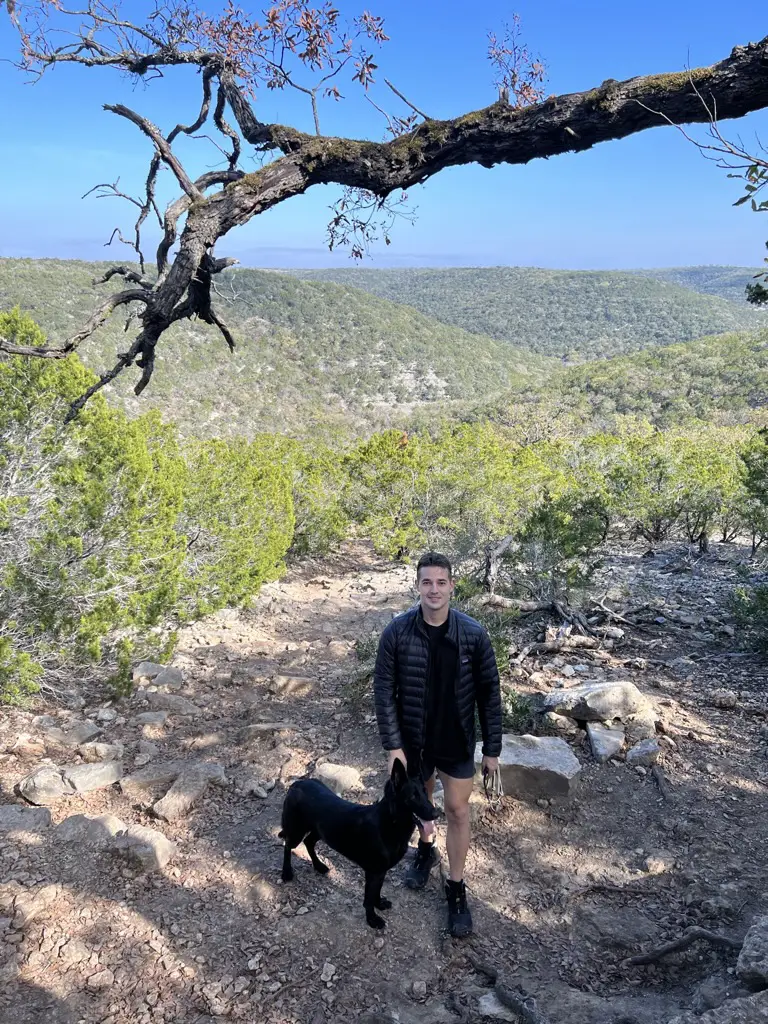
Robert is a native Texan writer for TexasWalkabout, passionate about Texas culture and food, wearing cowboy boots daily. He interviews local pitmasters and chefs, tastes and reviews innovative dishes, and explores hidden gems and iconic landmarks. Graduating magna cum laude in Cyber Security from the University of Texas at San Antonio, Robert excels academically and professionally while also being knowledgeable in Texas history and culture. After living in Texas for over 28 years, he provides first-hand and trustworthy information for all your Texas needs!

